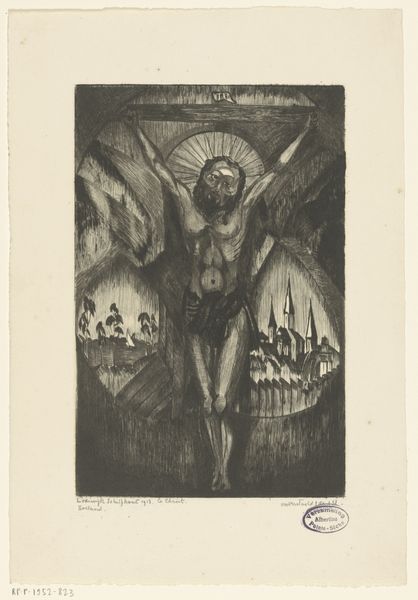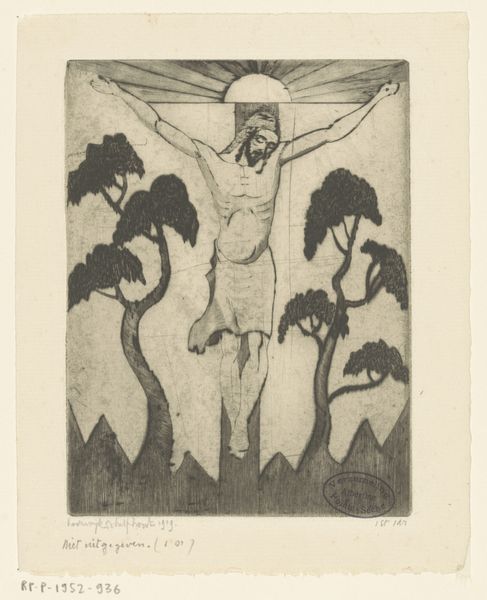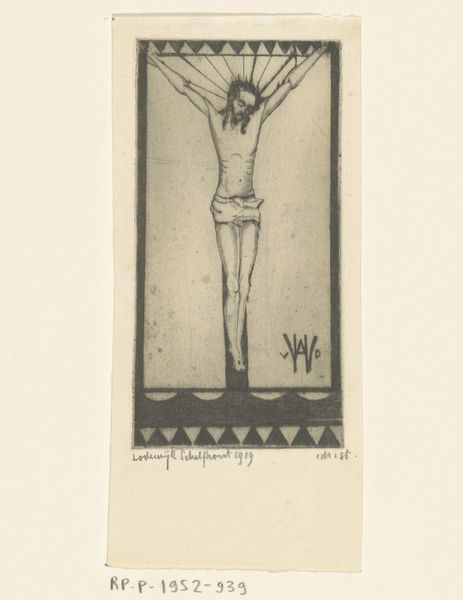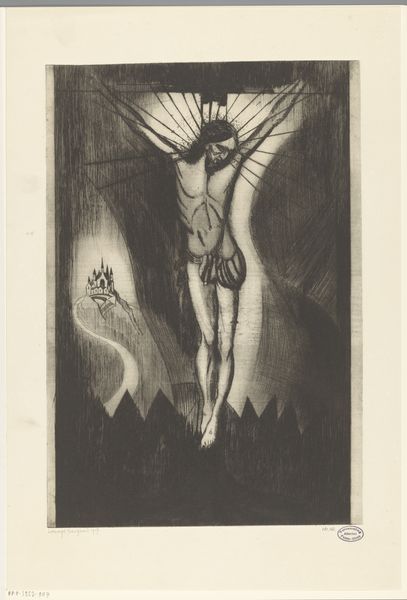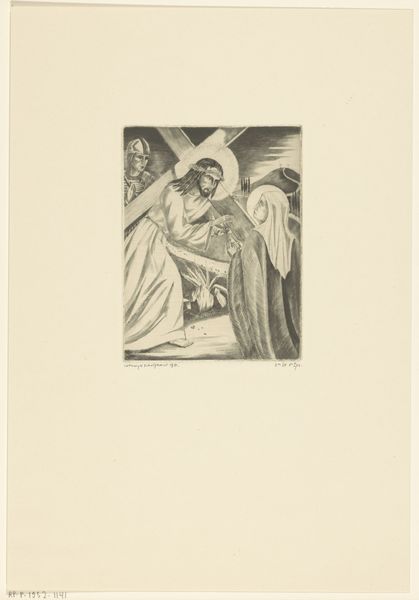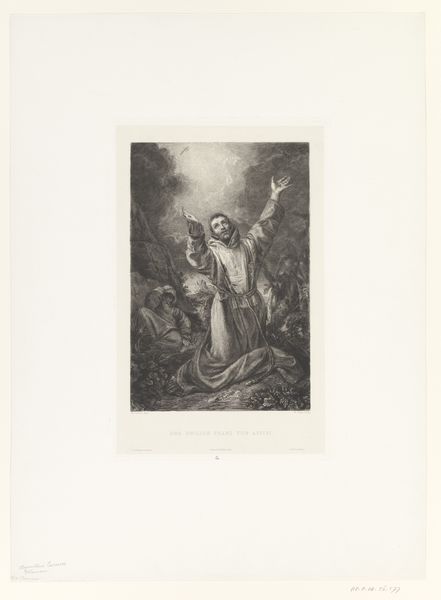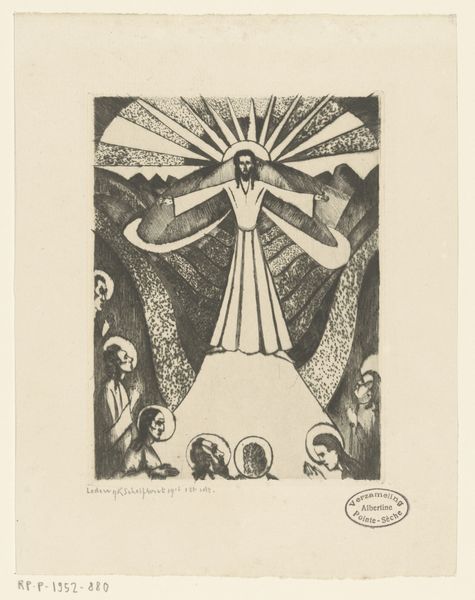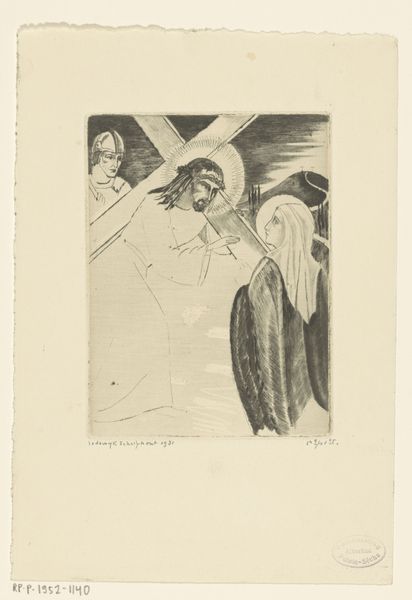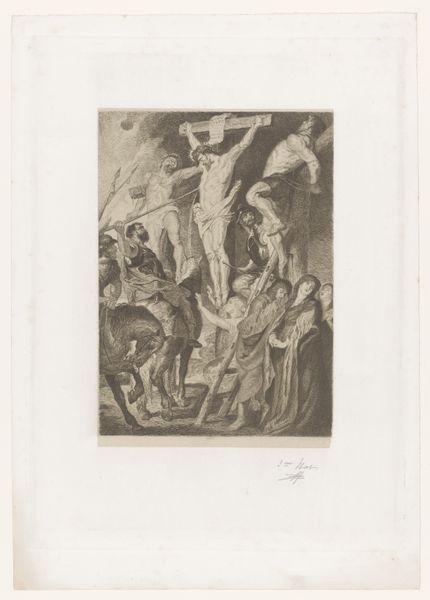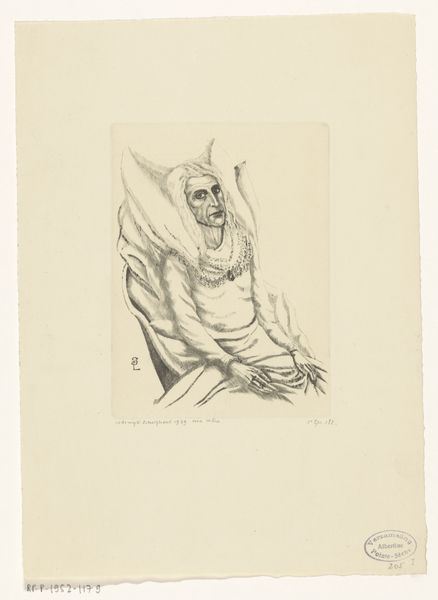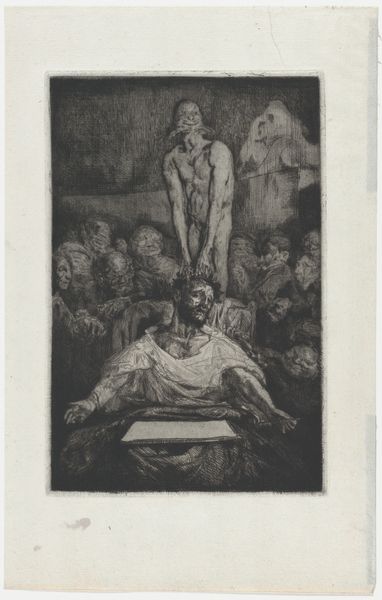
print, etching
# print
#
etching
#
landscape
#
figuration
#
expressionism
#
symbolism
#
history-painting
#
monochrome
Dimensions: height 235 mm, width 155 mm
Copyright: Rijks Museum: Open Domain
Editor: Here we have Lodewijk Schelfhout’s “Christus aan het kruis,” or “Christ on the Cross,” created in 1913. It's a monochrome etching, and the sharp lines and stark contrast give it such a tormented feel. What do you make of this piece? Curator: I see an artist wrestling with tradition and modernity, particularly around narratives of sacrifice. The religious subject matter is traditional, yes, but consider the historical context. Expressionism was emerging as a powerful force, reflecting the anxieties and alienation of a rapidly changing world. Schelfhout seems to be using the crucifixion, a potent symbol of suffering and redemption, to speak to broader social and political issues of the time. What do you notice about the landscapes framing the central figure? Editor: I see one looks like a village and the other maybe fields? It's almost like civilization on one side, nature on the other. Curator: Precisely. Aren’t these dual landscapes suggestive? We could view them as stand-ins for opposing ideologies or perhaps the conflicting spaces inhabited by the working class. And what about the emaciated figure of Christ? Does that strike you as purely religious iconography? Editor: No, he looks vulnerable. Not like the idealized figures you usually see. Maybe a statement about poverty? Curator: Or perhaps an intentional deconstruction of power. By depicting Christ as frail and suffering, is Schelfhout challenging established power structures? Is he creating an intersection between religious iconography and social critique? Remember that historical painting has frequently reinforced nationalism, patriotism, and systems of oppression, and Schelfhout may be pushing back against that very tradition. Editor: That's a perspective I hadn't considered. It's powerful to think about art engaging with those kinds of political statements, of history being used to discuss those political points. Curator: Art is always a reflection of its time, whether consciously or not. It holds a mirror up to our past and offers a lens through which to view our present. Editor: I definitely have a much deeper understanding and respect for this etching now. Thanks!
Comments
No comments
Be the first to comment and join the conversation on the ultimate creative platform.
